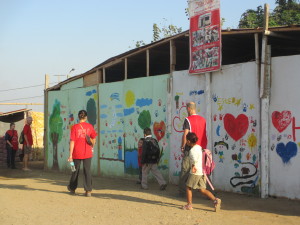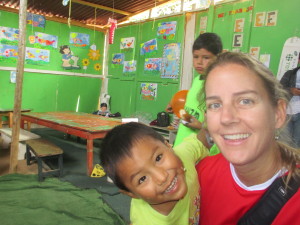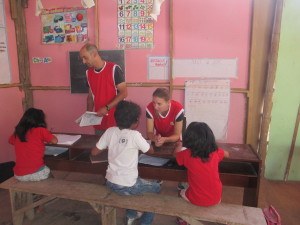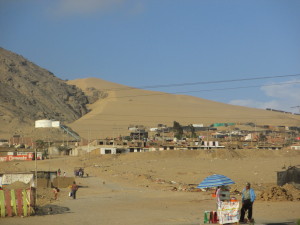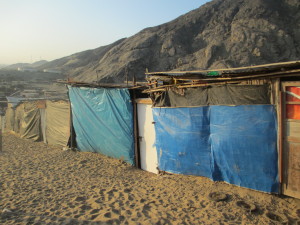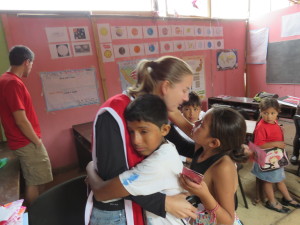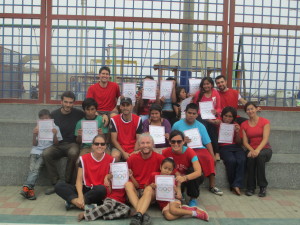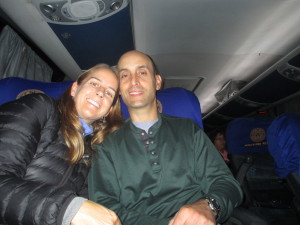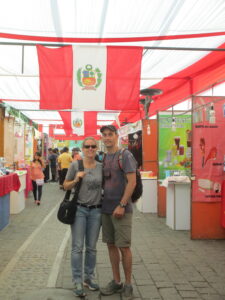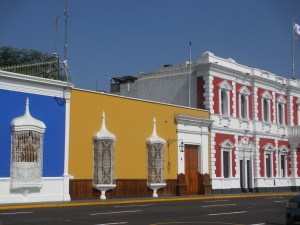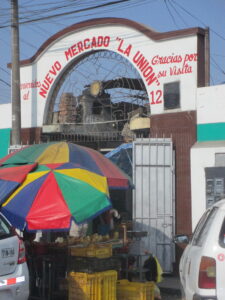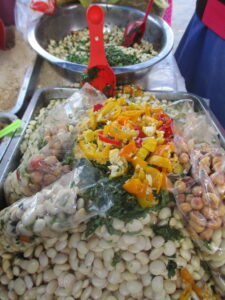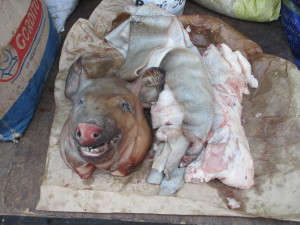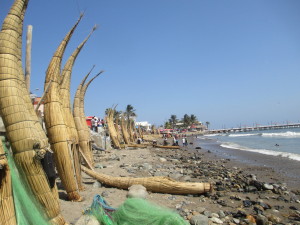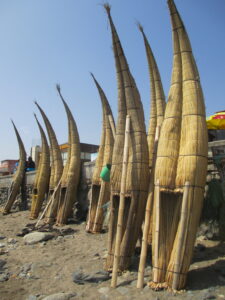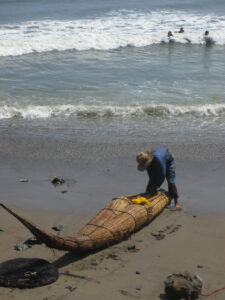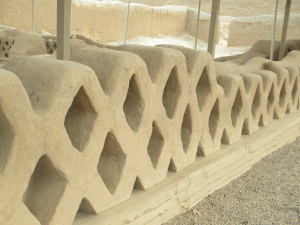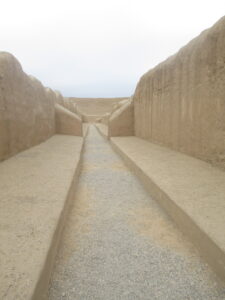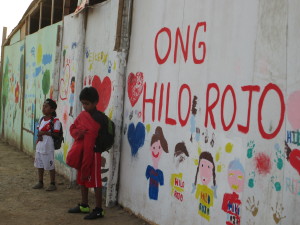We’d been craving community and a sense of purpose. For months we’d been looking at volunteer opportunities on the WorkAway.com website but hadn’t found a situation that we were excited about…. until we came across Hilo Rojo. It was time to roll up our sleeves, go to school and work with some Peruvian kids in Trujillo.
School Hilo Rojo ~ Red Thread of Fate
Public schools in Peru are free and compulsory. However, in Trujillo (and other cities as well), students are required to pay for uniforms, school supplies, snacks and special events, etc. From what we gathered there aren’t government programs to provide financial assistance. For many of the families living in total poverty, the cost is prohibitive.
Here’s where Hilo Rojo comes in.
The school was started three years ago by two passionate Peruvian educators living in Trujillo. The project was born out of witnessing the many inequalities and social conflicts in the neighborhood, such as low educational attainment and attendance, youth crime, teen pregnancy, and domestic violence. Hilo Rojo has two goals for each student. One is to prepare every student academically to be successful in a public school, and two, to help them earn a scholarship to afford public education.
What does Hilo Rojo mean?
According to Chinese legend, the gods tie an invisible red thread around the ankles of those that are destined to meet and help each other in a certain way. While over time the thread may stretch or tangle, it will never break as the connections are meant for eternity. We originally signed up to volunteer for one week, but we quickly felt the tug of the red threads around our ankles and ended up staying for two.
The basic school building was built six months ago. It has two rooms, one for the 30 preschoolers and another for the 25 older kids. Each room has one paid teacher who does her best to teach all of her students with very little resources and materials. They rely heavily on the assistance of volunteers.
Harry taught math and English to students ranging in ages from 10 – 21 with various levels of comprehension and learning abilities. He taught his classes mostly in Spanish which was really gratifying for him.
I taught English to four younger students, ages 6-12. Olivia, a volunteer from Colorado, co-taught with me, which allowed us to have some one-on-one time with different students. Some of our kids could barely read and write Spanish, so teaching English was challenging — but also a lot of fun. We worked with the alphabet, colors, numbers, shapes and basic nouns.
I spent my first few days helping out in the preschool room, but the total chaos was hard for me to handle. The teacher was so sweet but there was little to no structure, which simply amounted to utter pandemonium most of the time. The kids were so cute, and many just wanted to cuddle and play with my earrings, which I could have done all day. Instead, I chose to spend most of my time with the older kids, where I felt I was more effective.
Each day we helped out wherever we were needed. For example, one morning I led an art project for the older kids, and another day we were chaperones on a field trip to the movies. This was a special treat as many of the kids had never been to the mall or a movie theater before. Each day at recess, we played soccer with the kids at a nearby park, which was a ton of fun. The turf field was the nicest thing in the neighborhood.
Home Visits
The director of Hilo Rojo makes home visits a few times each week to connect with the families for a variety of reasons. As volunteers we were encouraged to accompany the director at least once to observe with our own eyes and hearts where the students live.
Most of the students live in the poor neighborhood built on the sand dune at the edge of town. Their homes are shanties with dirt floors. Some are built with mud brick walls and corrugated metal roofs while the poorest have walls made with hanging blue tarps and reed mats. There are some power lines and water pipes, but many of the families cannot afford to pay for such luxuries.
The experience was eye-opening and intense, and it shed light on the issues the families are facing each day. It also reinforced the concept that kids are resilient and capable. Through the tears in my eyes, I could clearly see that Hilo Rojo is such a gift to the community.
Goodbye + Thank You
Our last day was really special. We were given handmade signs and the little kids sang us a song. There were lots of tears and big hugs going around, and while we felt loved and appreciated, the true “thank yous” go right back to Hilo Rojo and the kids!
Team Hilo Rojo
A big part of what made our time so special was working and living alongside nine other volunteers for two weeks. We represented seven countries and a wide span of ages. I loved hearing all the languages, forever feeling like the inadequate American who can only converse in English.
We stayed on the second floor of a house that was a 10-minute bus ride away from school. We each paid approx $10 per day to volunteer, which included living in the house, getting three meals a day and having access to a washing machine. The leftover money went to support the school.
I was so happy that our meals were provided for us because we didn’t have to think about food for two whole weeks. Breakfast was always bread and jam, the same thing we’ve been eating for breakfast for the past six months. I’m pretty sure that’s what all South Americans eat for breakfast every day. Not exactly bacon and eggs.
Lunches and dinners were heartier. Both meals started with a delicious soup — Peruvians love their soup! — and were followed with something like rice and chicken, or chicken and rice (see what I did there?). The meat eaters ate rice and chicken at least once a day and usually twice a day. Our lovely cook (she really was lovely) prepared something like omelettes, quinoa, beans or fried plantains for me to eat with my rice.
We were also served fresh juice, like chicha morada (made from purple corn) and carambola (star fruit) twice a day. Such an indulgence! The crowd favorite was pineapple juice.
We all squeezed in around the big table and ate our three meals together, laughing and telling stories. At times we also held our heavy hearts together as we brought up certain kids and talked about their intense situations.
We also all shared ONE bathroom, so that was pretty fun. And there wasn’t any hot water in the shower [ever], but you know what? We all survived. In a way, it was a stark reminder that even with some challenges, we were still living like royalty compared to our students.
We were grateful for the time we spent in Trujillo. If you’re looking for a special place to volunteer for a few weeks, I highly recommend that you consider the beautiful kids at Hilo Rojo.

